Cabinet Approves One Nation, One Election
Table of Contents
Inspiration Study Circle, Dehradun Cabinet Approves One Nation, One Election
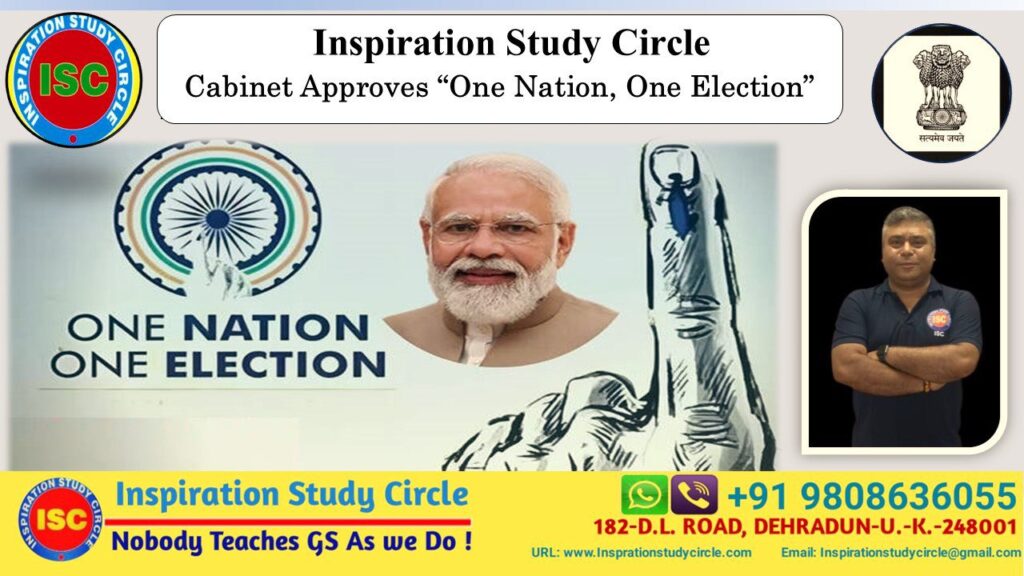
Union Cabinet approved the ‘one nation, one election’ proposal, accepting the report of a panel led by former President Ram Nath Kovind.
A day after Union Home Minister Amit Shah spoke about ‘one nation one election’, the Union Cabinet on 18th September 2024 cleared the proposal in this regard, which aims to synchronize the elections for the Lok Sabha and state assemblies to a single schedule.
Sources in the government said the ‘One Nation, One Election’ Bill is likely to be introduced in the upcoming winter session of Parliament.
The Ministry of Law & Justice proposal, which has been cleared, is based on the recommendations made in a report of a high panel committee led by former President Ram Nath Kovind.
The Kovind-led high-level committee on ‘one nation-one election’ in its report has stated that frequent elections create an atmosphere of uncertainty and impact policy decisions.
The report, comprising 18,626 pages, is an outcome of extensive consultations with stakeholders, experts, and research work over 191 days, since the constitution of the panel on September 2, 2023.
‘One Nation, One Election’ was a proposal under consideration by the Government of India to harmonize elections to the Lok Sabha (the lower house of the Indian Parliament) and all state assemblies. It wants to hold these elections simultaneously, on the same day, or within a specific time frame.
Campaign and Proposal by the Government of India
From 1951-52 to 1967, elections to the House of the People and state assemblies were held mostly simultaneously, after which the cycle was broken. Now, elections are held almost every year and even within a year at different times, resulting in large-scale. Expenditure by the government and other stakeholders, diversion of security forces and other election officials from their primary duties for a significant period, disruption of development work due to prolonged application of the Code of Conduct, etc.
The Law Commission of India observed in its 170th Report on Election Law Reforms: “This cycle of annual and off-season elections should be put to an end. We should return to a situation where the Lok Sabha and all assembly elections are held simultaneously. The rule should be that ‘Elections should be held once in five years for the Lok Sabha and all the Legislative Assemblies.
The department-related Parliamentary Standing Committee on Personnel, Public Grievances, Law, and Justice has also examined the ‘Possibility of holding simultaneous elections to the Lok Sabha (Lok Sabha) and State Assemblies’ submitted in December 2015 in its 79th report. Matter and recommended an alternative and practical method of holding simultaneous elections in two phases.
Considering the above and national interests, it is desirable to hold simultaneous elections in the country. The Government of India formed this high-level committee to study the issue of simultaneous elections and recommend holding simultaneous elections in the country.
In August 2018, the Law Commission of India issued a draft report on simultaneous elections. It is said that to hold the general election simultaneously, amendments to the Constitution, the People’s Representative Act 1951, and the rules of procedure of the People’s Assembly and the State Assembly must be carried out.
It stated that the Constitution, the Representation of the People’s Act 1951, and the Rules of Procedure of Lok Sabha and State Assemblies require appropriate amendments to allow simultaneous elections.
The commission also recommended getting approval from at least 50% of the states. However, on the merits of the simultaneous poll, the commission will save public money, reduce the burden on administrative organizations and security forces, ensure the timely implementation of government policies, and focus on administrative development.
History of the Motion
- The main idea of One People, One Election is to synchronize the timing of Lok Sabha and State Assembly elections in all states to reduce the frequency of elections across the country.
- The concept lasted until 1967, but it was disrupted for various reasons, including government defection, resignations, and dissolutions. The cycle was first broken in 1959 when the Center invoked Article 356 to dissolve the then-Kerala government.
- As a result, several Legislative Assemblies were dissolved after 1960 due to party differences and infighting, leading to elections for the Lok Sabha and State Assemblies.
- Currently, the assembly elections in Arunachal Pradesh, Sikkim, Andhra Pradesh, and Odisha are held along with the Lok Sabha elections.
- The idea of holding simultaneous elections was initiated in 1999 by the Legal Group headed by BP Jeevan Reddy.
High-Level Committee under Ramnath Kovind
On September 2, 2023, the Government of India issued a notification appointing a high-level committee to investigate the issue of simultaneous elections. This committee has been constituted under the chairmanship of former President of India Ram Nath Kovind. Other members of this committee are:
- Amit Shah, Union Home Minister
- Congressleader Adhir Ranjan Chowdhury
- Former Leader of Opposition Ghulam Nabi Azad
- Chairman of the 15th Finance CommissionNK Singh
- Lok Sabha’s Former Secretary General Dr Subhash C Kashyap
- Senior AdvocateHarish Salve
- Former Chief Vigilance CommissionerSanjay Kothari
The committee worked with national and state political parties and seeks public and legal input on pending proposals. The proposal has raised concerns about its impact on India’s democratic and federal structure.
Report of the Ramnath Kovind Committee:
The report of the committee, comprising 18,626 pages, is an outcome of extensive consultations with stakeholders, experts, and research work of over 191 days, since the constitution of the panel on September 2, 2023.
In its report to the government in March, just before the general election was announced, the panel recommended implementing ‘one nation, one election’ in two phases. The first phase would involve simultaneous polls for the Lok Sabha and state assemblies, while the second phase would conduct elections for local bodies, such as panchayats and municipalities, within 100 days of the general election.
The panel also suggested a common electoral roll, which would require coordination between the Election Commission of India (ECI) and state election commissions. Currently, the ECI oversees Lok Sabha and Assembly elections, while state election commissions manage polls for municipalities and panchayats.
A total of 18 constitutional amendments have been proposed, most of which would not need ratification by state assemblies. However, these changes would require certain constitutional amendment bills to be passed by Parliament. Some proposed reforms, such as the single electoral roll and a single voter ID card, would need approval from at least half of the states.
Separately, the Law Commission is expected to release its report on simultaneous polls soon, a concept strongly supported by PM Modi. Sources indicate that the commission may recommend holding simultaneous elections for all three levels of government — the Lok Sabha, state assemblies, and local bodies — starting in 2029, along with providing a unity government in situations like a hung house.
Advantages of ‘One Nation, One Election’ (ONOE)
- ONOE will enable the government to focus on governance once the elections are over. During the elections, everyone’s attention is entirely focused on these elections because no one wants to lose. There is virtual paralysis of administration at various levels. This reflects very badly on India’s growth prospects.
- The Model Code of Conduct (MCC) comes into force only after the election is announced by the Election Commission (EC). Due to MCC, no new policy decisions are taken during elections. Hence, major policy decisions are delayed.
- Even when no new policy decision is required, the implementation of ongoing projects gets derailed during the election period as the political executive as well as government officials will be engaged in election duties neglecting routine administration.
- If the elections are held simultaneously, the election expenses of the political parties can be drastically reduced. There will be no duplication of fundraising. This will save the public and the business community from being repeatedly pressured for election donations.
- The same electoral roll may be used for all elections. This will save tremendous time and money spent on updating the electoral roll. It will also make it easier for citizens as they will not have to worry about their names missing from the electoral roll once they are registered.
- Many police personnel and paramilitary forces are deployed to ensure the peaceful conduct of the elections. This involves massive reconstruction, involving huge costs. This kind of deployment can be minimized with simultaneous elections.
- Holding elections within a certain period may reduce horse-trading by elected representatives, which is a concern even with anti-defection laws in place. Holding elections at fixed intervals may make it difficult for them to switch parties or form alliances for personal gain.
- Frequent elections result in governments making policy decisions to sway voters in every election. While this cannot be stopped completely, it will reduce the frequency with which governments have to declare independence.
Challenges with ‘One Nation, One Election’ (ONOE)
- ONOE’s plan raises serious questions like, ‘What will happen if the Central or State Government collapses mid-term?’ and ‘Will elections be held again in each state or will the President’s rule be introduced?’
- It will pose logistical challenges in terms of the availability and security of electronic voting machines, personnel, and other resources. The EC may face difficulties in managing such a large exercise.
- The idea of ONOE is not concerned with the concept of ‘federalism’ as it is founded on the assumption that the nation is “one” which contradicts the content of Article 1 which envisages India as a “Union of States”.
- The current form of recurrent elections can be seen as beneficial in a democracy as it allows voters to make their voices heard more often. Since the underlying issues of national and state elections are different, the existing framework prevents the mixing of issues, ensuring greater accountability.
- Various estimates by the Election Commission, NITI Aayog show the cost of conducting all state and parliamentary elections in a five-year cycle. Simultaneous elections will increase the cost of setting up several EVMs and VVPATs. So, it is not a good idea to amend the constitution to save Rs 5 per voter in a year.
- There is economic research to suggest that such election spending by parties and candidates benefits the economy and government tax revenues by boosting private consumption and serving as a stimulus.
High-level Committee submits its report.
“Simultaneous Elections Core to Aspirational India”
After carefully considering all suggestions and viewpoints, the Committee recommends a two-step approach to lead to simultaneous elections. As the first step, simultaneous elections will be held for the House of the People and the State Legislative Assemblies. In the second step, elections to the Municipalities and the Panchayats will be synchronized with the House of the People and the State Legislative Assemblies in such a way that Municipalities and Panchayats elections are held within a hundred days of holding elections to the House of the People and the State Legislative Assemblies.
The Committee also recommends that there should be a single electoral roll and Electoral Photo Identity Cards (EPIC) for use in elections to all three tiers of Government.
In tune with its mandate to explore the mechanism for simultaneous elections, and keeping in view the existing framework of the Constitution, the Committee has crafted its recommendations in such a way that they are following the spirit of the Constitution of India and would require bare minimum amendments to the Constitution.
Upon all-inclusive deliberations, the Committee concludes that its recommendations will significantly enhance the transparency, inclusivity, ease, and confidence of the voters. Overwhelming support for holding simultaneous elections will spur the development process and social cohesion, deepen the foundations of our democratic rubric, and realize India’s aspirations, Bharat.
Trivia: The idea of ‘one nation, one election’ was first proposed in the 1980s. The Justice BP Jeevan Reddy-headed Law Commission had in its 170th report in May 1999 said that “we must go back to the situation where the elections to Lok Sabha and all the Legislative Assemblies are held at once”.
Disclaimer: the above-mentioned article is based on information from the Press Information Bureau of India, the New Indian Express, and Wikipedia.
You may also like: –
1. UDAY- UPSC CSE 2026 Foundation Batch
2. ‘Pratigya’- UPSC- CSE 2025 Test Series
3. INS Arighaat and India’s Nuclear Triad
Recent Post
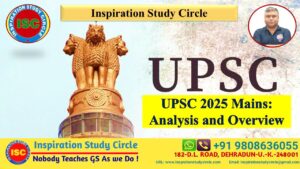
UPSC Mains 2025 Analysis and Overview
UPSC Mains 2025 Analysis and Overview Table of Contents The UPSC Mains 2025 analysis indicated a paper that was a balance of static and analytical questions,
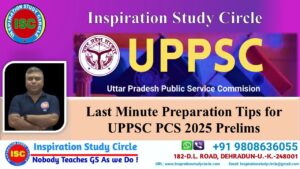
Last Minute Preparation Tips for UP PCS Prelims 2025
Last Minute Preparation Tips for UP PCS Prelims 2025 Table of Contents The Uttar Pradesh Public Service Commission conducts a series of annual examinations for
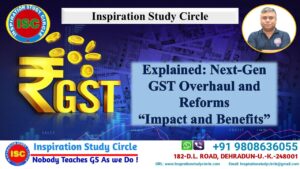
Explained: Next-Gen GST Overhaul and Reforms
Explained: Next-Gen GST Overhaul and Reforms Table of Contents The GST Council in its 56th meeting on 3rd September, 2025, made the recommendations relating to changes in

Explained: Vikram-32 Chip
Explained: Vikram-32 Chip Table of Contents Union Information and Broadcasting Minister Ashwini Vaishnaw recently unveiled India’s first indigenously developed 32-bit processor called VIKRAM-32. The minister presented the

UPSC Prelims 2026 Test Series
UPSC Prelims 2026 Test Series Table of Contents Inspiration Study CircleUPSC Prelims 2026 Test Series The Union Public Service Commission (UPSC) is set to conduct
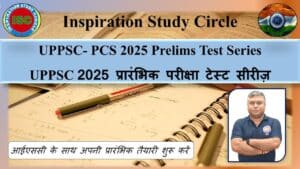
UPPSC- PCS 2025 Prelims Test Series
UPPSC- PCS 2025 Prelims Test Series UPPSC 2025 प्रारंभिक परीक्षा टेस्ट सीरीज़ उत्तर प्रदेश लोक सिविल सेवा 12 अक्टूबर 2025 को अपनी उच्च और संयुक्त
